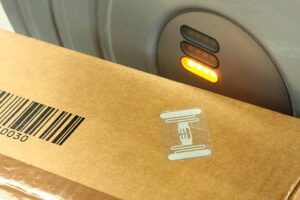Retailers face many challenges, including competitive product pricing, rising overheads, and unreliable supply chains. Shoplifting and employee theft can add to these losses.
RFID helps retailers lower these risks. It increases inventory accuracy, enables faster cycle count times, and automates reordering at safe stock levels. It also allows better customer service. For professional RFID retail security system services, check this out.
Inventory Tracking
When you deploy an RFID system, the technology can help track inventory from warehouses and stores to customer’s hands. This can help prevent theft from a retailer by making it harder to take items without authorisation. It can also help to manage stock levels so that retailers always have enough in store for consumer demand.
This tracking helps to improve inventory accuracy by a significant margin over traditional methods and manual cycle counts. This allows retail employees to spend less time monitoring inventory and more time on other critical tasks like sales and customer service.
RFID systems have been known to reduce inventory shrinkage by 1.5% to 2%. This is because the system can instantly locate and compare a product to a list of sold products. If the item is not on the list, an alarm will sound. This gives retailers a much better understanding of what leaves the store, which helps decrease loss from theft and shrinkage.
Detecting Theft
Retailers use RFID to detect shoplifting attempts and other types of theft. The technology helps identify a potential suspect quickly and efficiently and can help reduce shrink rates.
RFID systems at store exits typically look similar to those used for electronic article surveillance (EAS). They may include an item scanner and a front-facing camera that alerts loss prevention associates. The item scanner can detect the presence of an RFID tag, which is compared against a database of items in-store inventory. If the item isn’t listed as sold, an alarm sounds. For professional RFID retail security system services, check this out.
In addition to ensuring physical security, retailers should ensure that role-based access control mechanisms restrict access to RFID readers and other equipment. They should also implement a procedure for regularly applying firmware updates to prevent vulnerabilities that hackers could exploit.
Lower False Alarm Rates
Retail security systems are effective deterrents against theft but can sometimes trigger false alarms, especially in busy stores. An RFID system reduces the number of false alarms, saving you money and providing more accurate data to manage your inventory.
RFID is also a powerful tool for tracking inventory throughout the supply chain. Integrated with sensors and analytics, it can enable retailers to see what’s moving where from the stockroom to the storefront. This helps optimise distribution processes and ensures that the freshest product is displayed in every store.
 Discreet RFID detection systems offer protection without compromising aesthetics or traffic flow. For example, Sensormatic pedestals combine AM and RFID technology to detect a range of exits, providing visibility into shrink and shopper movement for more informed decisions on optimising your store. The systems can also integrate with video technologies to provide a comprehensive shoplifting prevention solution.
Discreet RFID detection systems offer protection without compromising aesthetics or traffic flow. For example, Sensormatic pedestals combine AM and RFID technology to detect a range of exits, providing visibility into shrink and shopper movement for more informed decisions on optimising your store. The systems can also integrate with video technologies to provide a comprehensive shoplifting prevention solution.
Enhanced Customer Service
One of the biggest drivers of customer satisfaction is the speed of the checkout process. RFID solutions enable quick and accurate scanning, reducing lines and freeing staff to help customers on the floor. For professional RFID retail security system services, check this out.
Using RFID, employees can monitor return fraud and identify if a returned item has been stolen. Often, retailers employ EAS systems at store doors to detect this type of theft. Still, RFID technology can eliminate the need for employees to personally observe customers as they leave the store, a practice that is unnecessarily intimidating for shoppers.
RFID also improves stock accuracy and reduces cycle count times by instantly and accurately scanning entire shelves and stock rooms. This allows retailers to set reorder points and automatically restock items at safety stock levels, increasing inventory turns and optimising upstream distribution processes.
With better and more accurate data, retailers can make informed product placement decisions, boosting sales. Retailers can also use RFID to bring life to in-store displays, enabling digital screens to display relevant information, styling tips, and product promotions in front of shoppers.